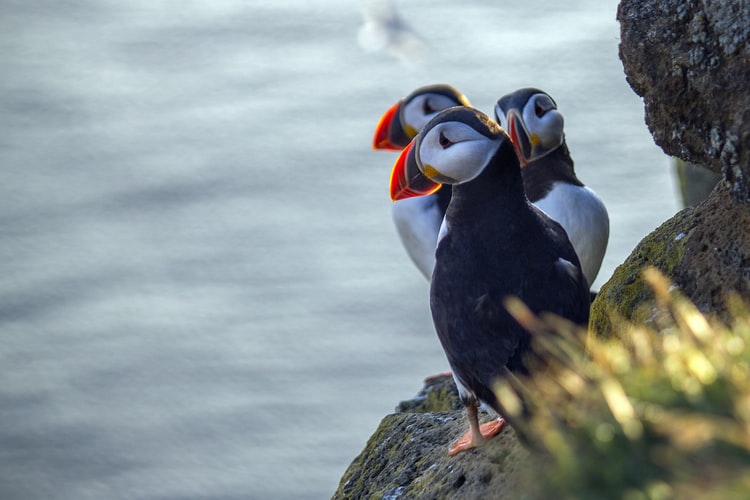The use of tools marks a significant development in evolution and the establishment of civilization. Humans are believed to have already had wooden tools around 4 million years ago, according to a 2009 article by Charles Choi for Live Science. What is often overlooked is that chimpanzees are humans’ closest living relatives, and they, too, knew how to create spear-like tools millions of years ago. In fact, scientists believe chimpanzees and monkeys have since entered the Stone Age.
Now, scientists also know that tool use is a behavior exhibited by numerous animals, from monkeys to crows. Here are a few of the instances humans have recorded.
A monkey using a stone to break glass

Last August, a Colombian white-faced capuchin (Cebus capucinus) was caught on camera using a stone to break glass. The monkey was attempting to shatter the tempered glass surrounding his enclosure at the Zhenzhou Zoo in Henan, China.
The viral video of the incident shows the monkey hitting the glass, much to visitors’ amusement. They stop laughing when the monkey’s second strike successfully breaks the panel. The monkey then runs away from the glass unharmed, and no one is injured, reported Stephanie Valera in a 2019 article for Geek.com.
Primates are known to use plant tools, but evidence of their using stone tools is quite rare. Humans developed stone tools 2 to 3 million years ago. Scientists believe chimpanzees weren’t that far behind, using stone tools at least 4,300 years ago, according to a 2015 article by Colin Barras for BBC Earth.
Pigs using tools to dig up soil

October 2019 saw Visayan warty pigs (Sus cebrifons), a critically endangered species native to the Philippines, become subject to international curiosity after they were observed using sticks as tools.
Conservation ecologist Meredith Root-Bernstein was the first to observe a pig called Priscilla using a stick to dig up soil and build a nest in a zoo. Root-Bernstein and her fellow researchers published a study on Priscilla and conducted that they have yet to determine why the pigs were digging, but that they probably learned this behavior from each other. Visayan warty pigs live and learn in family units, mentioned Scottie Andrew in a 2019 article for CNN.
Puffins scratching themselves with sticks

Researchers recently published findings on the ability of Atlantic puffins (Fratercula arctica) to scratch themselves with sticks. They observed two different puffins exhibiting the behavior, despite one being in Wales and the other being on an island in Iceland. This means that the behavior isn’t limited to just on group.
The Icelandic puffin was recorded picking up a stick using its beak and scratching the under part of his chest. It was reportedly the first time wild seabirds had been seen using tools. According to the study, the researchers are certain the puffins weren’t using the sticks to build nests because puffins prefer soft items such as feathers for nest-making, reported Andrew in a 2020 article for CTV news.
Crows thinking three steps ahead

Crows are intelligent creatures, with one species quite well known for turning twigs into spears. Researchers at the University of Auckland figured out that New Caledonian crows (Corvus moneduloides) can plan three moves ahead while using tools to get food.
They learned this by putting the crows through a four-part experimental puzzle. Many of the crows figured out how to sold it in one go, after exploring each part. This suggests that crows can imagine what’s necessary to accomplish complex tasks, according to a 2019 article by Douglas Main for National Geographic.
Elephants swatting flies with branches

Both wild and captive elephants use tools to clean their ears and wounds, but they’ve also been observed throwing sticks at cars, hitting humans with branches, and using three trunks to help them climb over fences.
Between 1994 and 2001, Benjamin Hart of the University of California Davis and his colleagues studied Asian elephants’ (Elephas maximus) use of branches to swat flies. They learned that the elephants could also shorten the branches to make them more effective at swatting, according to a 2018 article by Shimon Schuchat for the Elephant Listening Project.
Dolphins using sponges to forage

In Western Australia’s Shark Bay, Indo-Pacific bottlenose dolphins (Tursiops aduncus) have been seen picking up and wearing sponges when scavenging for food on the sea floor. Scientists suspect that they use the sponges to protect their beaks or rostrums.
Daughter dolphins learn to do this by watching their mothers forage: the behavior is learned via cultural transmission, according to Michael Krutzen’s 2014 piece for The Conversation.
Why we shouldn’t underestimate other species
After studying Priscilla the pig, Root-Bernstein said, “We might think that only humans manipulate the environment to affect their own lives, but in different ways many other species do this too.”
University of Washington researcher Kaeli Swift told National Geographic something similar: The crow study “really goes to show how wrong we have been in using the term ‘bird brain’ as an insult.”
These animals’ newly discovered use of tools has scientists rethinking the perceived dominance of the human race. Though a few of the animals on this list were observed using tools while they were in captivity or subject to experiments, it is possible that they are even more capable in the wild, like the chimpanzees at the beginning of their Stone Age.
This appeared in Animal Scene magazine’s July-August issue.
You might want to read:
– Symbiosis: Tit for tat in the animal kingdom
– To be or not to be: The question of gender in the animal kingdom
– Kuya Kim’s animal kingdom






